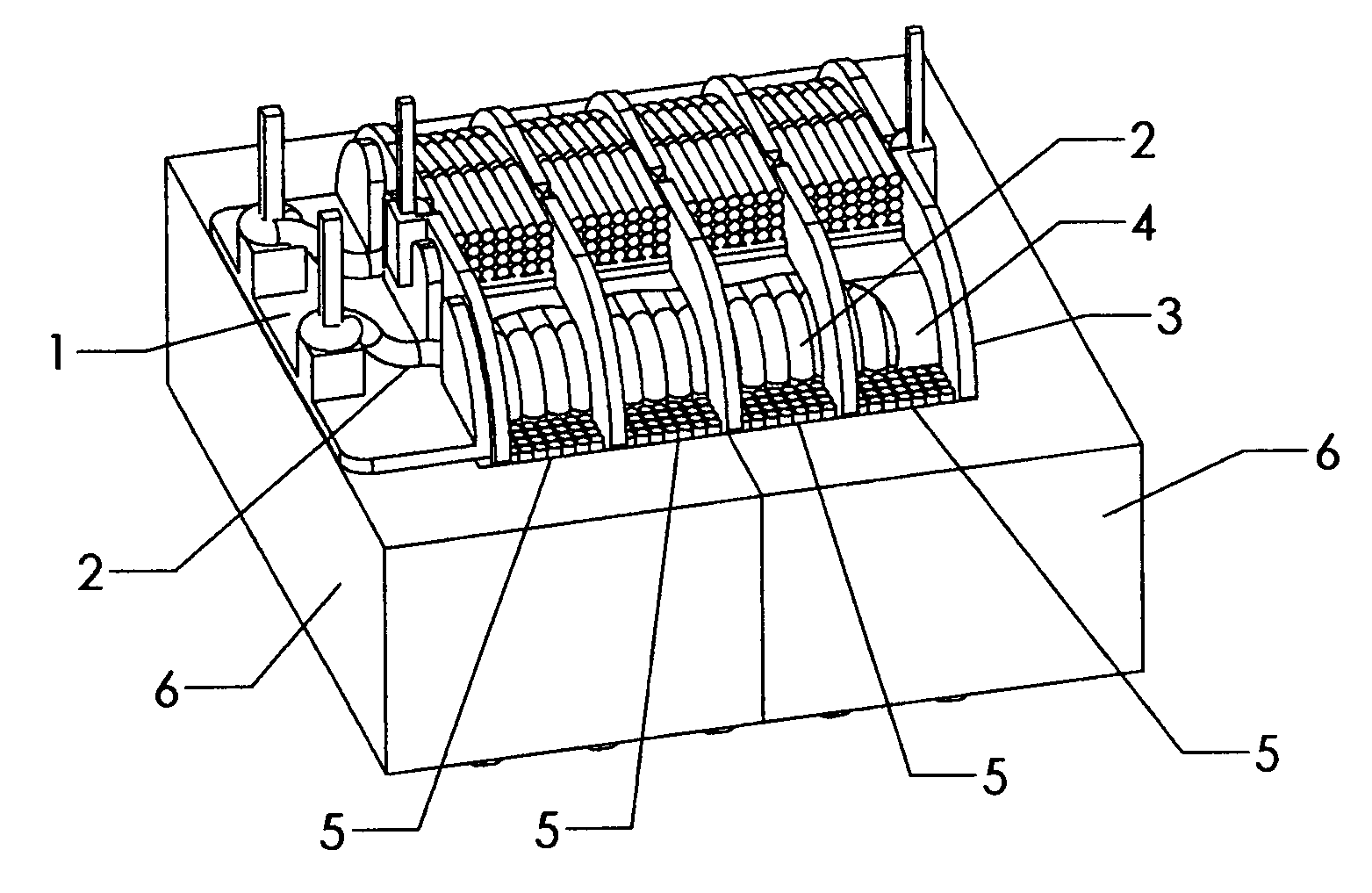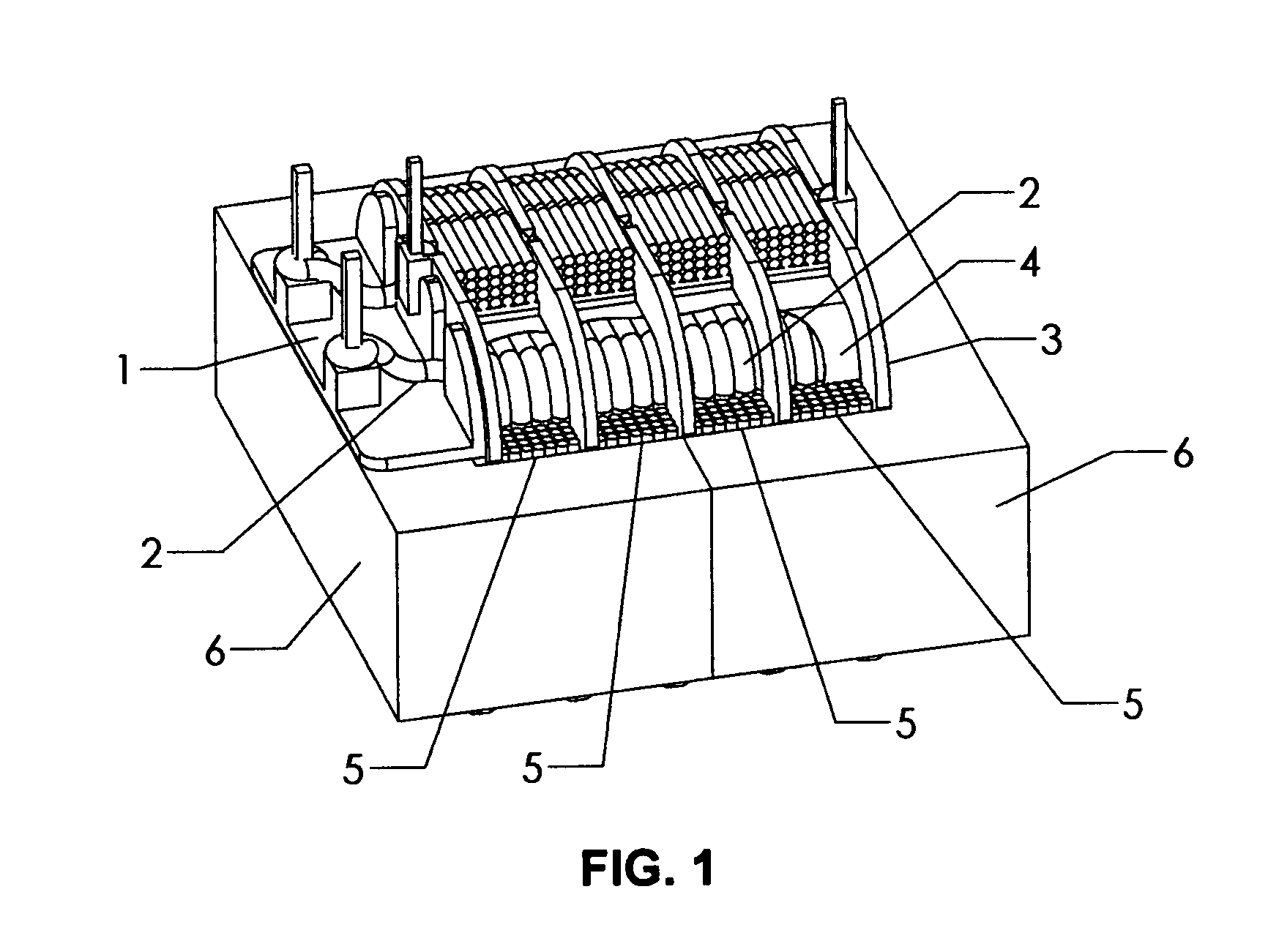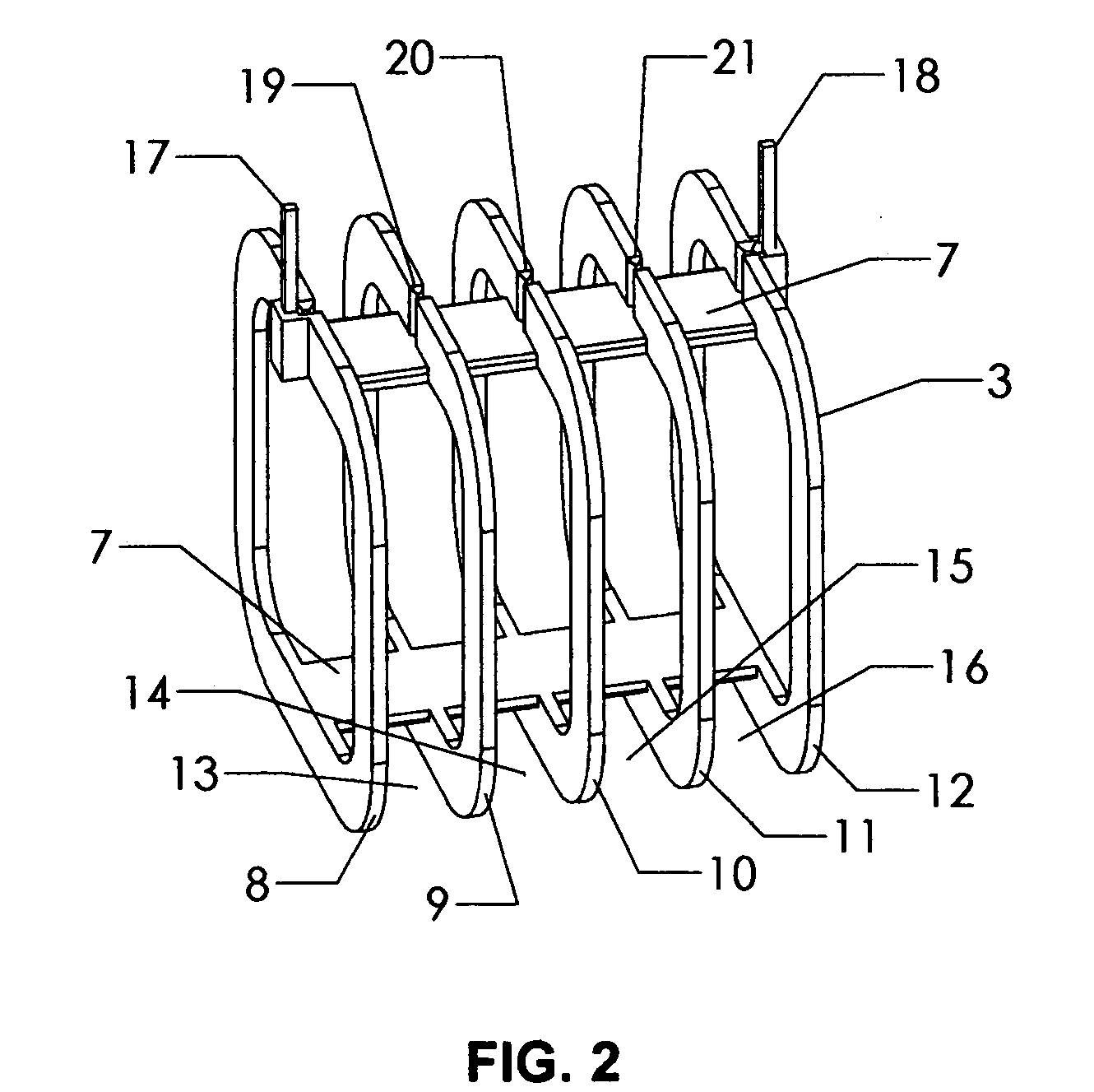High voltage pulse type transformer with increased coupling coefficient through primary and secondary winding proximity
a pulse type transformer and coupling coefficient technology, applied in the direction of transformer/inductance details, coils, inductances, etc., can solve the problems of low output power from the secondary winding, lead-setting is a labor-intensive and expensive process, and the number of wire ends that need to be lead-set goes up with the number of windings, so as to reduce separation and increase the coupling coefficient of the transformer
- Summary
- Abstract
- Description
- Claims
- Application Information
AI Technical Summary
Benefits of technology
Problems solved by technology
Method used
Image
Examples
Embodiment Construction
[0026]FIG. 1 is an isometric view of a preferred embodiment of the high voltage, step-up, high current DC pulse type transformer invention that increases the coupling coefficient through close proximity of the primary winding turns and secondary winding turns. In FIG. 1, a completely assembled transformer is shown with a bobbin 1, a primary winding 2, a frame 3 and separate thin insulation layer 4 combined to provide a form for winding the secondary winding 5 in close proximity to the primary winding 2. Both the primary winding 2 and secondary winding 5 are constructed using magnet wire commonly found in the transformer industry. The secondary winding 5 has an output voltage potential that is greater than the primary winding 2 such that the transformer is considered a step-up type transformer and the secondary winding 5 is a high voltage winding of sufficient output voltage potential to cause breakdown in the coating on the magnet wire used for the secondary winding 5 if the seconda...
PUM
 Login to View More
Login to View More Abstract
Description
Claims
Application Information
 Login to View More
Login to View More - R&D
- Intellectual Property
- Life Sciences
- Materials
- Tech Scout
- Unparalleled Data Quality
- Higher Quality Content
- 60% Fewer Hallucinations
Browse by: Latest US Patents, China's latest patents, Technical Efficacy Thesaurus, Application Domain, Technology Topic, Popular Technical Reports.
© 2025 PatSnap. All rights reserved.Legal|Privacy policy|Modern Slavery Act Transparency Statement|Sitemap|About US| Contact US: help@patsnap.com



